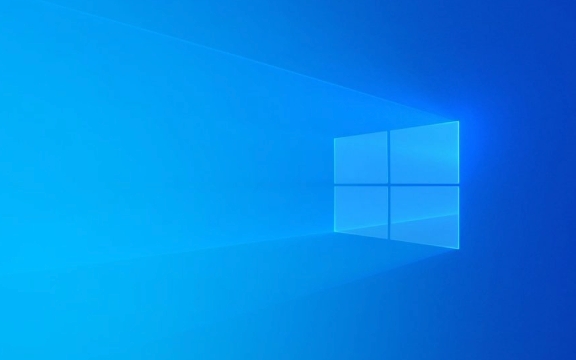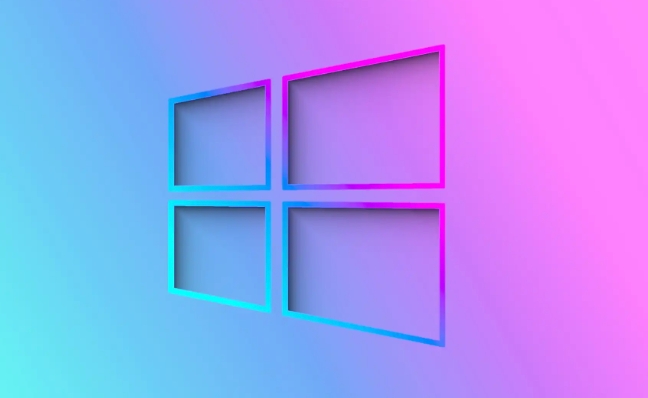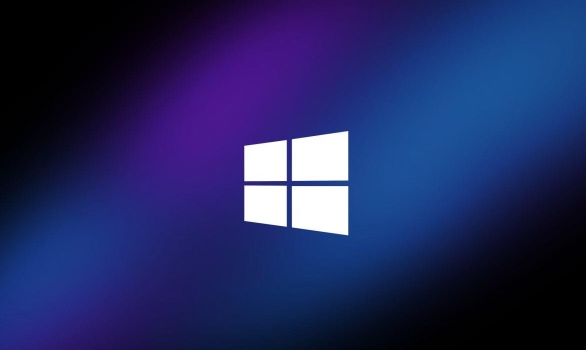If the microphone does not work properly on Windows, first check the physical connection and hardware, try changing the USB port or audio cable, and confirm whether the microphone is powered on or touching the mute key by mistake; secondly, confirm whether Windows recognizes the microphone in the "Record" tab of the sound settings. If it is not recognized, update or reinstall the audio driver; then check the microphone permissions in the privacy settings to ensure that the system and specific applications allow the use of the microphone; finally, run the built-in audio recording troubleshooting tool for Windows to automatically repair the problem. If it is still not resolved, it may be caused by hardware damage or software conflicts.

If your microphone isn't being detected or isn't working on Windows, you're not alone. It's a common issue that can stem from a few different causes—ranged from simple connection problems to driver or system settings issues. The good news is that most of the time, it's fixed without needing to replace hardware.

Check the Physical Connection and Hardware First
Before diving into software fixes, rule out the simplest possibilities. If you're using a USB mic, try plugging it into a different USB port. Sometimes, a port might not be delivering enough power or has a communication issue. For 3.5mm mics, make sure it's plugged into the correct jack—some PCs have separate ports for combo jacks, and it's easy to mix them up.
- Try a different cable or USB port
- Test the mic on another device if possible
- Make sure the mic has power (if it requires it)
Also, check if the mic has a mute switch or button—some mics and headsets have one that's easy to toggle accidentally.

Make Sure Windows Recognizes the Microphone
Windows might not be picking up the mic at all, or it might be using the wrong one if you have multiple audio devices connected.
To check:

- Right-click the speaker icon in the taskbar and select Sounds or Open Sound Settings
- Go to the Sound Control Panel (on the right side under Related Settings)
- Under the Recording tab, see if your microphone shows up
If it doesn't show up here, Windows isn't detecting it at all—this usually points to a hardware or driver issue. If it shows up but is grayed out, right-click and choose Enable .
Update or Reinstall Audio Drivers
Outdated or corrupted drivers are a common cause of microphone problems.
To update your audio drivers:
- Press Win X , select Device Manager
- Expand Sound, video and game controllers
- Right-click your audio device (often Realtek, Conexant, or something similar) and choose Update driver
If that doesn't help, try uninstalling the driver completely:
- Right-click the device and choose Uninstall device
- Restart your computer—Windows will reinstall the driver automatically
Sometimes, you might need to download the latest driver manually from your PC manufacturer's website or the audio chip maker's site.
Check Privacy and App Permissions
Windows 10 and 11 have privacy settings that control whether apps can access the microphone.
To check:
- Go to Settings > Privacy > Microphone
- Make sure Microphone access is on
- Scroll down and ensure the specific app you're using is allowed to access the mic
Some apps, like Zoom or Discord, won't work with the mic unless they're explicitly granted permission in the system settings—even if they ask for permission when you launch them.
Run the Built-in Troubleshooter
Windows has a built-in troubleshooter for audio problems, which can sometimes catch and fix issues automatically.
To run it:
- Go to Settings > System > Troubleshoot
- Click Other troubleshooters
- Find Recording Audio and click Run
This can help identify issues like default device settings or audio format mismatches.
If you've gone through these steps and your mic still isn't working, it might be a deeper hardware issue or a conflict with other software. But in most cases, checking the connection, enabling the mic in settings, updating drivers, and confirming permissions will get things working again.
The above is the detailed content of Microphone not detected or working on Windows. For more information, please follow other related articles on the PHP Chinese website!

Hot AI Tools

Undress AI Tool
Undress images for free

Undresser.AI Undress
AI-powered app for creating realistic nude photos

AI Clothes Remover
Online AI tool for removing clothes from photos.

Clothoff.io
AI clothes remover

Video Face Swap
Swap faces in any video effortlessly with our completely free AI face swap tool!

Hot Article

Hot Tools

Notepad++7.3.1
Easy-to-use and free code editor

SublimeText3 Chinese version
Chinese version, very easy to use

Zend Studio 13.0.1
Powerful PHP integrated development environment

Dreamweaver CS6
Visual web development tools

SublimeText3 Mac version
God-level code editing software (SublimeText3)
 Windows 11 slow boot time fix
Jul 04, 2025 am 02:04 AM
Windows 11 slow boot time fix
Jul 04, 2025 am 02:04 AM
The problem of slow booting can be solved by the following methods: 1. Check and disable unnecessary booting programs; 2. Turn off the quick boot function; 3. Update the driver and check disk health; 4. Adjust the number of processor cores (only for advanced users). For Windows 11 systems, first, the default self-start software such as QQ and WeChat are disabled through the task manager to improve the startup speed; if you use dual systems or old hardware, you can enter the power option to turn off the quick boot function; second, use the device manager to update the driver and run the chkdsk command to fix disk errors, and it is recommended to replace the mechanical hard disk with SSD; for multi-core CPU users, the kernel parameters can be adjusted through bcdedit and msconfig to optimize the startup efficiency. Most cases can be corrected by basic investigation
 How to Change Font Color on Desktop Icons (Windows 11)
Jul 07, 2025 pm 12:07 PM
How to Change Font Color on Desktop Icons (Windows 11)
Jul 07, 2025 pm 12:07 PM
If you're having trouble reading your desktop icons' text or simply want to personalize your desktop look, you may be looking for a way to change the font color on desktop icons in Windows 11. Unfortunately, Windows 11 doesn't offer an easy built-in
 Fixed Windows 11 Google Chrome not opening
Jul 08, 2025 pm 02:36 PM
Fixed Windows 11 Google Chrome not opening
Jul 08, 2025 pm 02:36 PM
Fixed Windows 11 Google Chrome not opening Google Chrome is the most popular browser right now, but even it sometimes requires help to open on Windows. Then follow the on-screen instructions to complete the process. After completing the above steps, launch Google Chrome again to see if it works properly now. 5. Delete Chrome User Profile If you are still having problems, it may be time to delete Chrome User Profile. This will delete all your personal information, so be sure to back up all relevant data. Typically, you delete the Chrome user profile through the browser itself. But given that you can't open it, here's another way: Turn on Windo
 How to fix second monitor not detected in Windows?
Jul 12, 2025 am 02:27 AM
How to fix second monitor not detected in Windows?
Jul 12, 2025 am 02:27 AM
When Windows cannot detect a second monitor, first check whether the physical connection is normal, including power supply, cable plug-in and interface compatibility, and try to replace the cable or adapter; secondly, update or reinstall the graphics card driver through the Device Manager, and roll back the driver version if necessary; then manually click "Detection" in the display settings to identify the monitor to confirm whether it is correctly identified by the system; finally check whether the monitor input source is switched to the corresponding interface, and confirm whether the graphics card output port connected to the cable is correct. Following the above steps to check in turn, most dual-screen recognition problems can usually be solved.
 Fixed the failure to upload files in Windows Google Chrome
Jul 08, 2025 pm 02:33 PM
Fixed the failure to upload files in Windows Google Chrome
Jul 08, 2025 pm 02:33 PM
Have problems uploading files in Google Chrome? This may be annoying, right? Whether you are attaching documents to emails, sharing images on social media, or submitting important files for work or school, a smooth file upload process is crucial. So, it can be frustrating if your file uploads continue to fail in Chrome on Windows PC. If you're not ready to give up your favorite browser, here are some tips for fixes that can't upload files on Windows Google Chrome 1. Start with Universal Repair Before we learn about any advanced troubleshooting tips, it's best to try some of the basic solutions mentioned below. Troubleshooting Internet connection issues: Internet connection
 Want to Build an Everyday Work Desktop? Get a Mini PC Instead
Jul 08, 2025 am 06:03 AM
Want to Build an Everyday Work Desktop? Get a Mini PC Instead
Jul 08, 2025 am 06:03 AM
Mini PCs have undergone
 How to clear the print queue in Windows?
Jul 11, 2025 am 02:19 AM
How to clear the print queue in Windows?
Jul 11, 2025 am 02:19 AM
When encountering the problem of printing task stuck, clearing the print queue and restarting the PrintSpooler service is an effective solution. First, open the "Device and Printer" interface to find the corresponding printer, right-click the task and select "Cancel" to clear a single task, or click "Cancel all documents" to clear the queue at one time; if the queue is inaccessible, press Win R to enter services.msc to open the service list, find "PrintSpooler" and stop it before starting the service. If necessary, you can manually delete the residual files under the C:\Windows\System32\spool\PRINTERS path to completely solve the problem.







